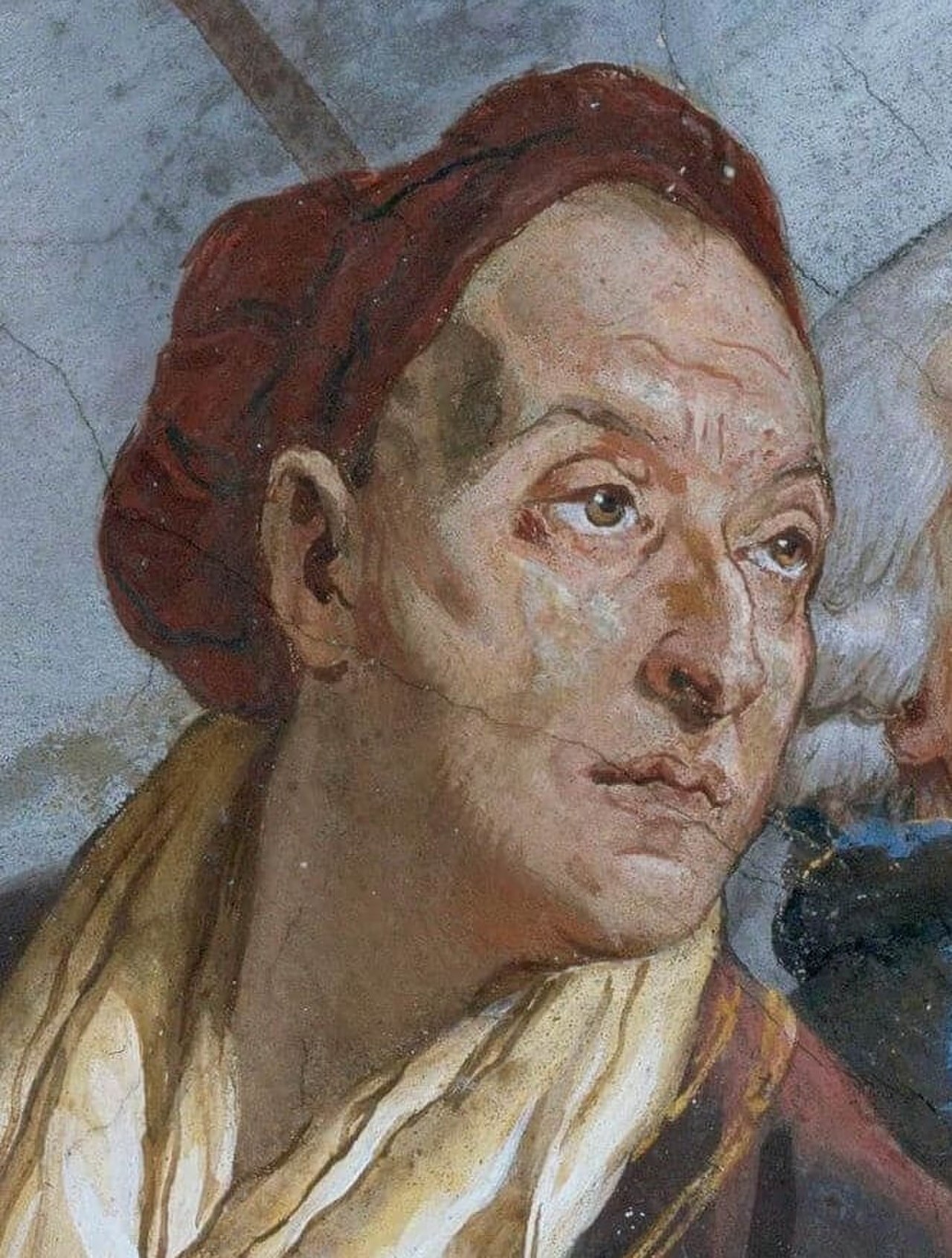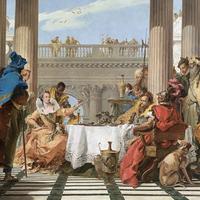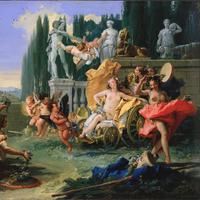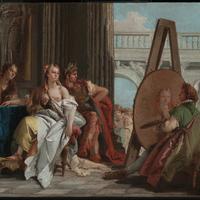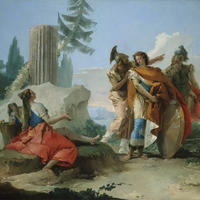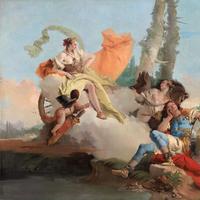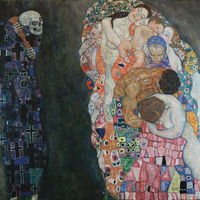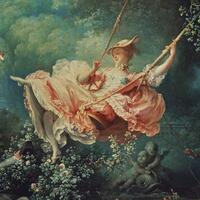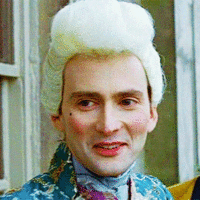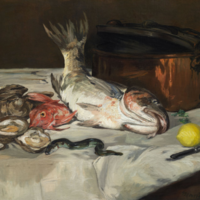More about Giovanni Battista Tiepolo

Sr. Contributor
Hated on for centuries, Giovanni Battista Tiepolo definitely made a comeback.
Giovanni's father died at sea when the artist was but an infant. Yeah, it's sad and all, but the Tiepolos were stacked. They were wealthy with connections to nobility. Mama Tiepolo fostered her son's artistic talents by sending him to work with a successful decorative painter. Striking out on his own didn't lead to instant success...but only because the young artist was looking for his 'thing.' Which happened to be frescoes at a time when everyone and their brother wanted a fresco. Tiepolo had basically struck gold. Established families in Milan, Bergamo, and the Veneto all wanted Tiepolo's magic touch on their palace walls. Soon, he married into the established Guardi art clan and had a couple artistic brats of his own.
Tiepolo had a thing for Venice. He liked sticking around the area instead of taking pesky commissions that required doing the long distance thing with his family. The royals in Sweden called him up, but he turned them down flat. The crowns from London to Paris to Moscow wanted a piece of him, but they had to settle for paintings that could be shipped out rather than the huge frescoes which brought him renown. Then, life happened and the Venetian government ruined everything.
Suddenly, foreigners weren't welcome in the Veneto. The economy took a downturn. Tiepolo couldn't make the bank of yesteryear in his homeland anymore, so he took his show on the road. The prince-bishop of Würzburg offered work and Tiepolo brought the sons to Germany for assistance. The Tiepolo frescoes in the Würzburg palace are considered his very best. After Würzburg, King Charles III of Spain dangled a fat contract to decorate the entirety of his new Royal Palace in Madrid. Despite his advanced age and worsening gout, Papa Tiepolo agreed to take on the journey to Spain to provide for the kids.
The Spanish commission took a few years to complete, and Giovanni survived just long enough for the Spanish to respond to it with a resounding pooh-pooh. In the time it took to paint the palace, artistic tastes du jour had shifted away from Tiepolo's style. The painter took the heat for it before dying in his ungrateful host country. It's all good, though. Tiepolo's recognized now as possibly the greatest artist of the 18th century. Definite win in the long term column.
Featured Content
Here is what Wikipedia says about Giovanni Battista Tiepolo
Giovanni Battista Tiepolo (/tiˈɛpəloʊ/ tee-EP-ə-loh,
Italian: [dʒoˈvanni batˈtista ˈtjɛːpolo, ˈtjeː-]; 5 March 1696 – 27 March 1770), also known as Giambattista (or Gianbattista) Tiepolo, was an Italian painter and printmaker from the Republic of Venice who painted in the Rococo style, considered an important member of the 18th-century Venetian school. He was prolific, and worked not only in Italy, but also in Germany and Spain.
Giovan Battista Tiepolo, together with Giambattista Pittoni, Canaletto, Giovan Battista Piazzetta, Giuseppe Maria Crespi, and Francesco Guardi are considered the traditional Old Masters of that period.
Successful from the beginning of his career, he has been described by Michael Levey as "the greatest decorative painter of eighteenth-century Europe, as well as its most able craftsman."
Check out the full Wikipedia article about Giovanni Battista Tiepolo

